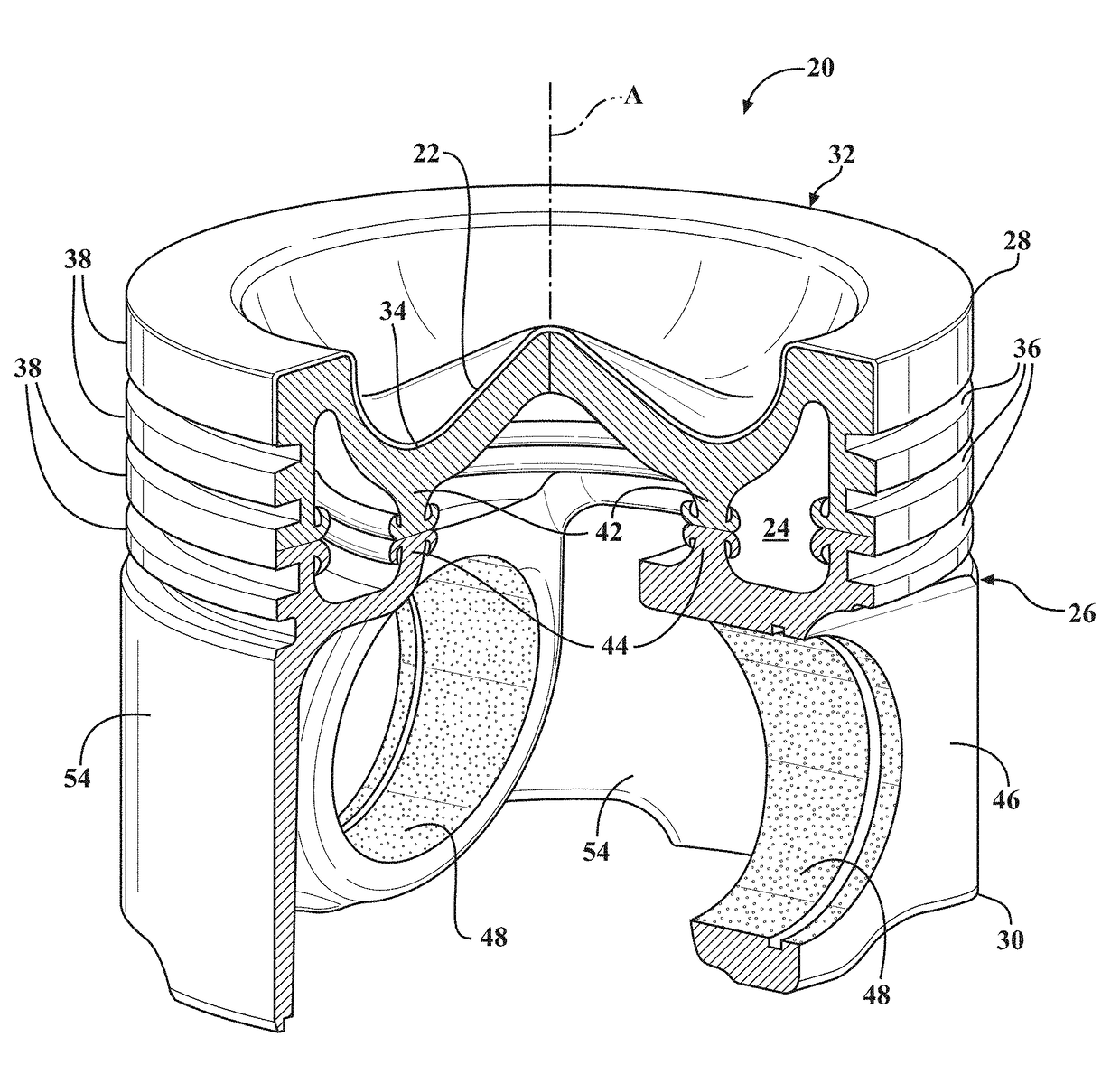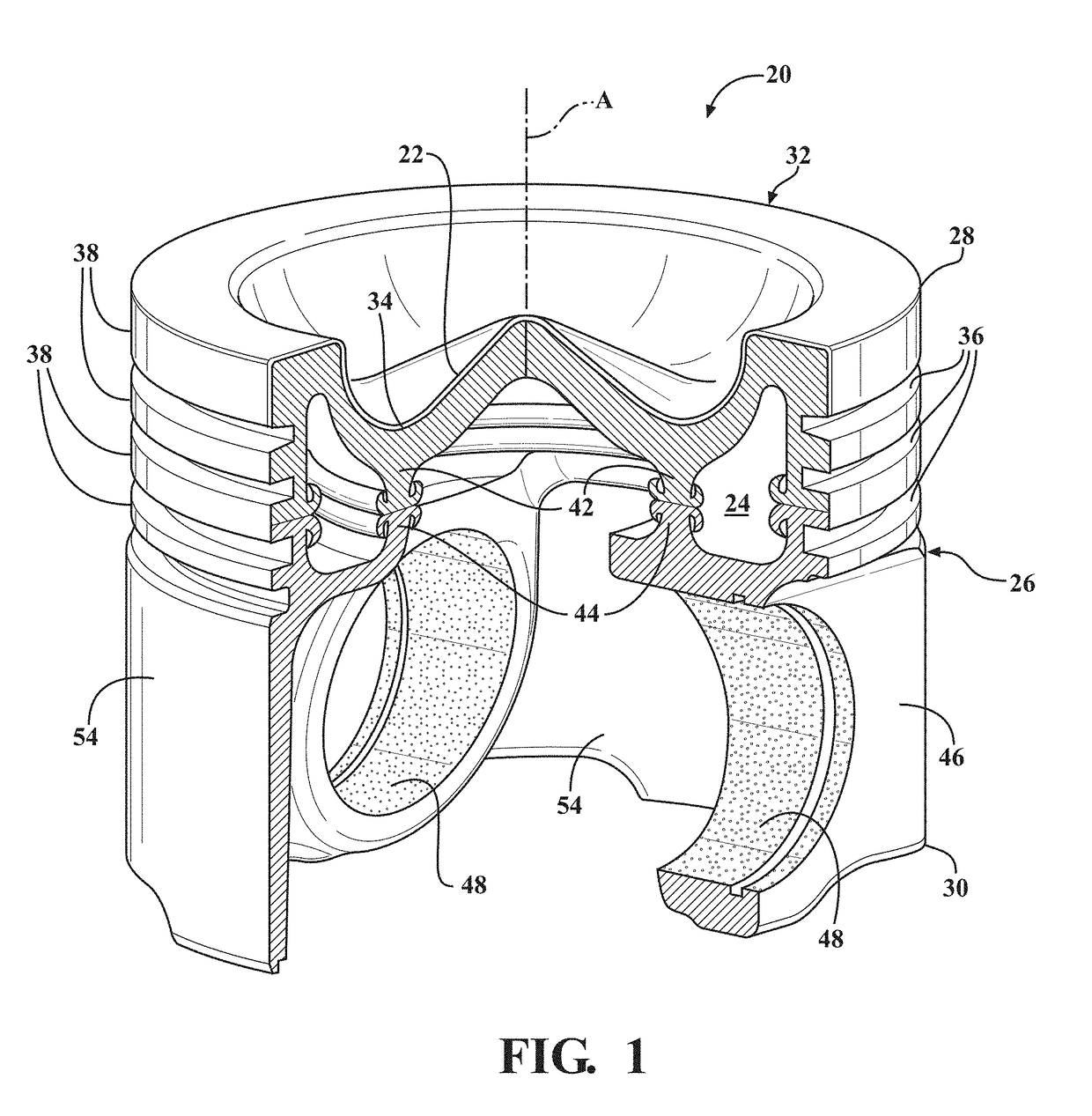Steel piston crown and/or combustion engine components with dynamic thermal insulation coating and method of making and using such a coating
a technology of dynamic thermal insulation and combustion engine, which is applied in the direction of superimposed coating process, machines/engines, mechanical equipment, etc., can solve the problems of thermal loss through the combustion chamber, eventual spalling and failure of the ceramic layer, and about 4% to 6% of available fuel energy loss, etc., to achieve the effect of improving the thermal barrier coating
- Summary
- Abstract
- Description
- Claims
- Application Information
AI Technical Summary
Benefits of technology
Problems solved by technology
Method used
Image
Examples
Embodiment Construction
[0021]One aspect of the invention provides an engine component, such as a piston 20, with a thermal barrier coating 22 for use in an internal combustion engine, such as a heavy duty diesel engine or alternatively a gasoline engine. The thermal barrier coating 22 reduces heat loss to the cooling system and thus improves engine efficiency. The thermal barrier coating 22 is also more cost effective and stable, as well as less susceptible to chemical attacks, compared to other coatings used to insulate pistons.
[0022]According to an example embodiment shown in FIG. 1, the thermal barrier coating 22 is applied to the piston 20. However, various different components of the internal combustion engine 20 can be coated with the thermal barrier coating 22. The example piston 20 is designed for use in a heavy duty diesel engine and exposure to combustion gases, but the thermal barrier coating 22 can be applied to other types of pistons, and also to other components exposed to a combustion chamb...
PUM
| Property | Measurement | Unit |
|---|---|---|
| Length | aaaaa | aaaaa |
| Length | aaaaa | aaaaa |
| Thickness | aaaaa | aaaaa |
Abstract
Description
Claims
Application Information
 Login to View More
Login to View More - R&D
- Intellectual Property
- Life Sciences
- Materials
- Tech Scout
- Unparalleled Data Quality
- Higher Quality Content
- 60% Fewer Hallucinations
Browse by: Latest US Patents, China's latest patents, Technical Efficacy Thesaurus, Application Domain, Technology Topic, Popular Technical Reports.
© 2025 PatSnap. All rights reserved.Legal|Privacy policy|Modern Slavery Act Transparency Statement|Sitemap|About US| Contact US: help@patsnap.com



